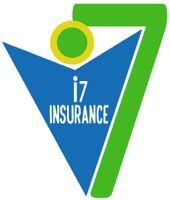i7 Insurance
Life Insurance
A Simple Guide to the Different Types of Life Insurance
It’s a fact of life that we are all “mortal.” But there are a few things that we can do to prepare for our own mortality. Life Insurance can help you plan for life’s unforeseen twists and turns, while also helping you secure a stable future for those you love the most.
If you are unsure about the different types of life insurance, here is a breakdown of the various kinds, what they have to offer, who they are for, and how they are different.

Term Life Insurance
Term life insurance offers the greatest amount of coverage for the lowest initial cost. For this type of life insurance, the monthly premium will generally remain the same for the lifespan of policy you choose, whether that be 10, 20, 30 or even 40 years in certain circumstances. The monthly amount paid will never change and nor will the death benefit, the amount the beneficiary receives upon the death of the insured individual.
It’s important to note that once this kind of policy completes it’s term, for example after 20 years, the next policy will be more expensive as the policy holder will be 20 years older. However, a savvy person will also be aware that some insurance companies have “conversion” provisions built into their term life policies, allowing the insured to convert the policy to a permanent policy at some point before the term ends.
There are also many different “riders” that do add to the premium amount, but can add tremendous value to the policy. For instance, a disability rider can provide a monthly income for a certain number months if the insured was unable to work because of a medical condition that develops. Another rider, the accelerated death benefit is often added to the policy at no extra premium charge, or very minimal. In the case of the insured being diagnosed with a chronic, critical, or terminal illness, the insured may request a certain portion of the face amount of the policy. This would allow the insured to receive medical treatment, to continue to pay on the mortgage, or some other need. Other riders are often added to term life policies include an accident rider, which would add a certain sum of money to the face amount of the policy should the insured die as the result of an accident. Another common rider added to term policies is the “Children’s” rider, which adds a small life policy on the child, so that if that child were to die, there would be money to help pay for burial costs.
Term life insurance is a great option for individuals with debt. That is, the policy will help take care of any debt that the insured individual could leave behind. For example, a person could take out a life insurance policy that is equal to the amount of their mortgage debt and in this way the mortgage would be paid off if the insured passes away. Financial stress would be alleviated during a difficult time for the survivors. It’s also good for single parents who want to set up their children for a better, more successful life if a parent were to pass away.
Certain types of term life insurance policy can also be written in a policy for final expenses, for empty nesters or retirees or even for those who are ill.
Generally, term life insurance is beneficial to anyone who is single, young and married and has children, or a person who has someone who depends on them for support.
Permanent Life Insurance
Permanent life insurance is either whole life and/or universal life insurance. Both of these types of life insurance are different from term life insurance in that along with a guaranteed death benefit, they also will build cash value (in an accumulation account) that can be used while the main insured individual is still alive.
Permanent life insurance only goes away when you do and can remain in force as long as you live and as long as you pay the required premiums. The cash value in these types of policies is generally tax deferred. However, the IRS does restrict the amount of money one can contribute within a year’s time so that it is not considered a “Modified Endowment Contract.”
With both types of permanent life insurance policies, you can use the cash value money as you desire. You may use it for education, for medical expenses, for a down payment for your home, for retirement, or for whatever you want, as long as you continue to pay your monthly premiums. The use of this money is called a “policy loan” and is subtracted from the death benefit if not paid back.
Permanent life insurance may be a good option if you have long term needs, like income for a spouse, leaving an inheritance for your children or grandchildren (often called a “legacy”), or even estate planning.
Here is a breakdown of the two types of permanent life insurance, whole and universal.
Whole Life Insurance
Though a kind of permanent life insurance, whole life insurance is similar to term life insurance in that the monthly premium will never change and nor will the death benefit. Whatever you choose to pay when you get the policy and whatever you decide on for your death benefit, that’s what you’ve got. For example, if you take out a $200,000 policy and the monthly premium is $50 per month, those numbers will never change as long as the policy is in force, with the exception being if the policy owners borrows from the cash value and doesn’t pay it back. An exception to this is that with the better whole life policies, often the cash value built up in the account will be added to the amount the insured’s beneficiaries receive in the case of the insured’s death.
Universal Life Insurance
Between the two varieties of permanent life insurance, universal is the most flexible. As your life changes and as you increase or decrease in your income, you can elect to increase or decrease your death benefit and/or your monthly payment.
As an example, let’s say you are not making much money in your 30’s so you pay the minimum. But in your 40’s, you’ve gotten a big promotion and are making more money, and therefore decide to put more money into your policy. The policy remains in force as long as you pay the minimum payment. However, with a universal policy, the amount of the minimum payment can differ from year to year. It depends on the cash value account balance. As mentioned earlier, one of the key benefits of this policy is that you can change what it looks like as your insurance needs change.
The universal life policy has the potential to grow your money the fastest, although no values are guaranteed.
I'm Here to Help!
Other types of insurance include Key Employee Life Insurance, where a small business owner takes out a life insurance policy on a key employee so that if he or she passes away, the business owner “buys time” to find and train a suitable replacement, and Juvenile Whole Life Insurance, where one takes out a whole life policy on a child. The benefits of this are that it “locks in” a lower monthly premium amount for the life of the policy and guarantees the child’s insurability should the child develop some kind of illness or is injured in such a way as to no longer qualify for life insurance.
Hopefully, after reading this you have a better understanding of the different types of life insurance and what they all mean. If you have any questions or want to discuss life insurance options for you or your family, give Frank a call at 251.709.1355.
